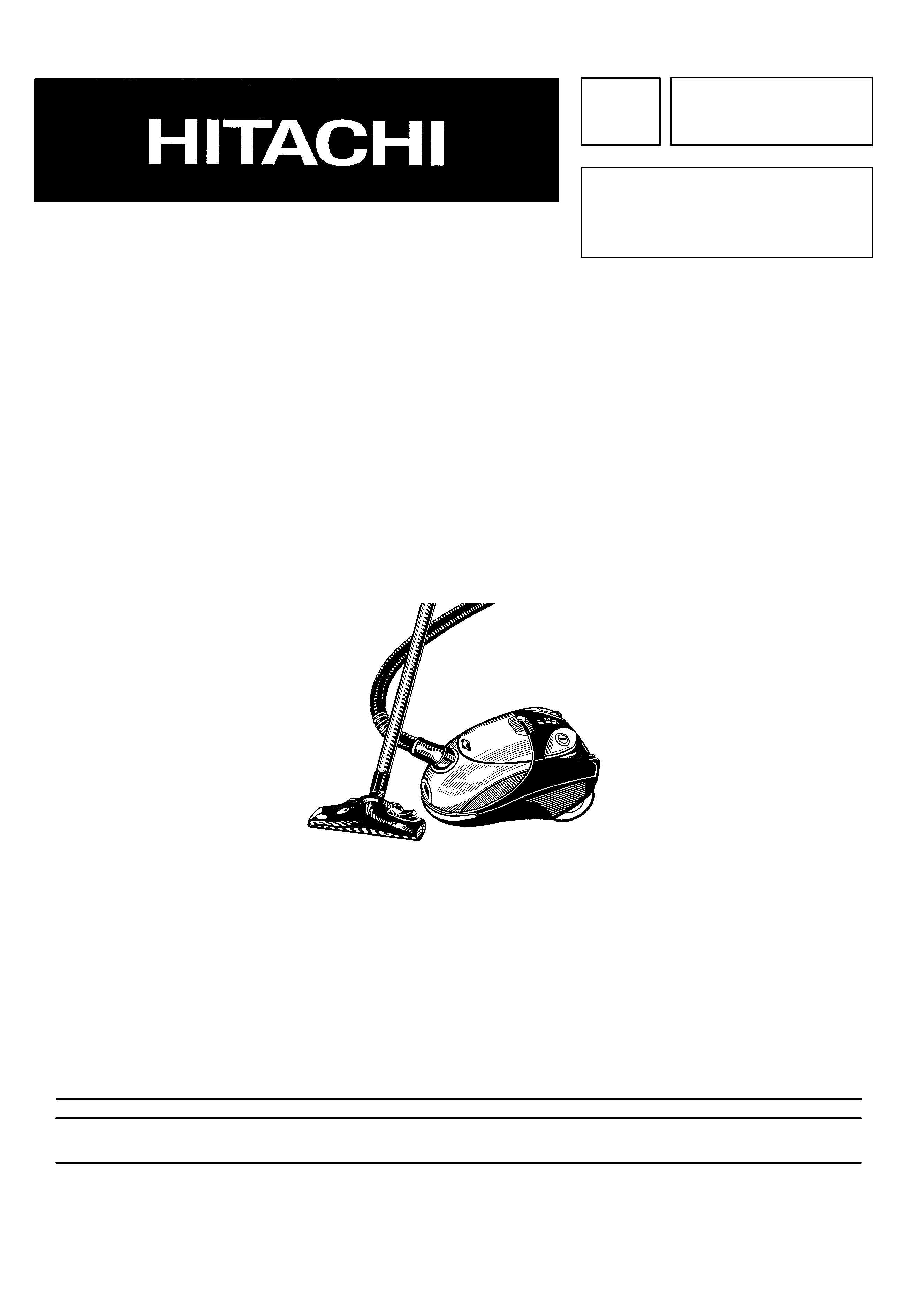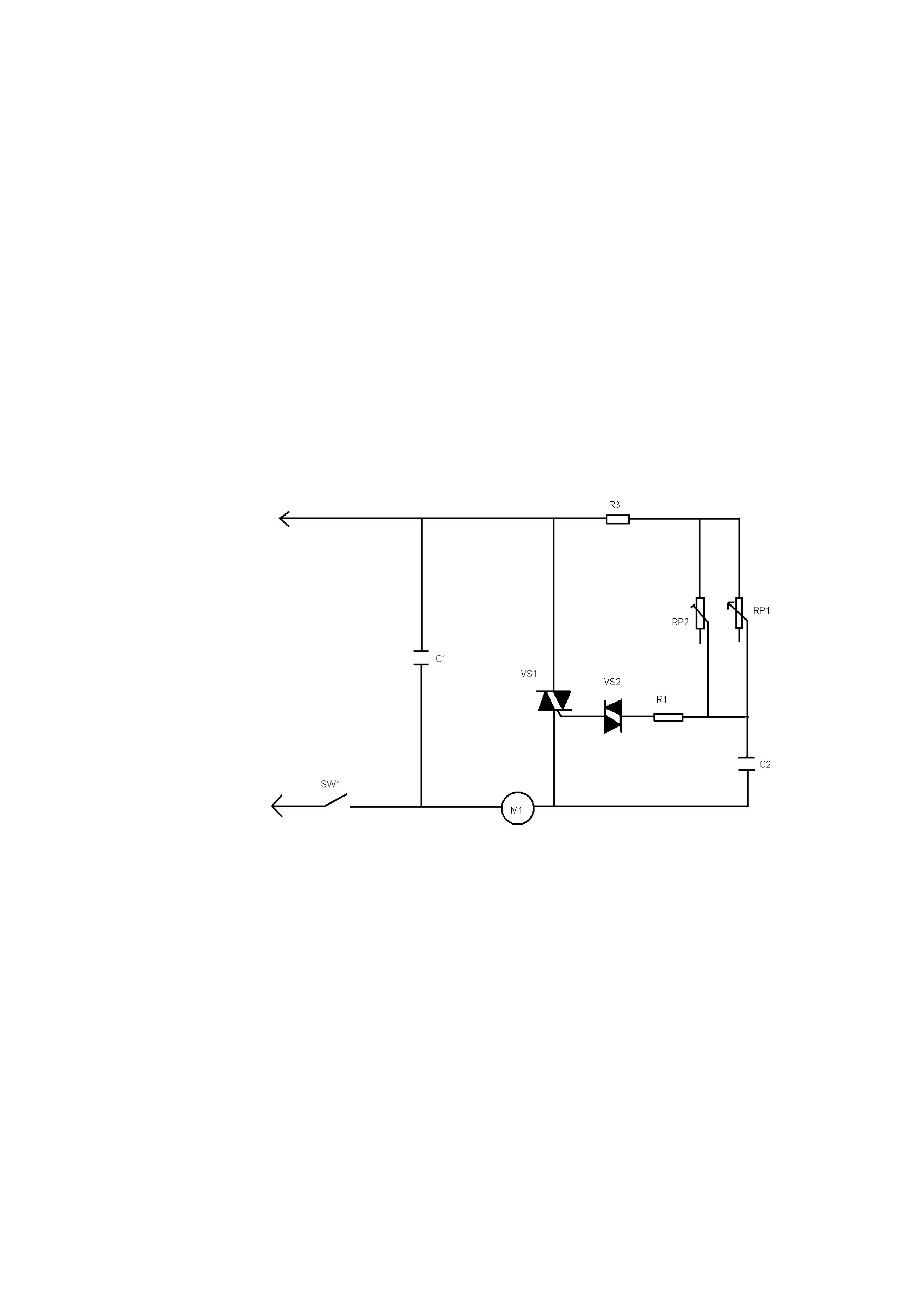
SERVICE MANUAL
CONTENTS
1. OVERVIEW..................................................... ..2
2. ASSEMBLY & DISMANTLING INSTRUCTIONS..... ..2
3. CIRCUIT DIAGRAMS........................................ ..5
4. CONSTRUCTIONAL DIAGRAMS........................ ..7
5. ACCESSORIES................................................ 10
6. PARTS LIST CV-600......................................... 11
7. PARTS LIST CV-610......................................... 12
8. ACCESSORIES PARTS LIST..............................13
9. FINAL TESTS.................................................. ..4
SPECIFICATIONS
MODEL
HITACHI CV-600
HITACHI CV-610
Voltage (V)
230-240
230-240
Rated power (W)
1200
1200
Peak power (W)
1500
1500
Insulation class
II.
II.
Noise level (dBA)
75
75
Air throughput (I/s)
45
45
Negative pressure (kPa)
25
25
SPECIFICATIONS AND PARTS ARE SUBJECT TO CHANGE FOR IMPROVEMENT
VACUUM CLEANER
JUNE 2000
HHEE
VC
No. CZ001
CV-600
CV-610

2
Cylinder vacuum cleaners
1. Overview
These vacuum cleaners utilise a double plastic casing. The interior
consists of compartments for the storage of paper or textile filters and a
motor. Between the rear of the motor and case there is a plastic
pressing which serves to reduce noise caused by air flow.
All the
various components are fitted
into the bottom casing which has
wheels. This is finished with a top cover . On the top cover there is are
two lids, one is the dust bag compartment cover and the other covers
the accessories. Micro-filters are fitted in the dust bag compartment
and in the rear part of the vacuum cleaner. The hose is attached to the
lid of the vacuum cleaner.
2. Assembly and dismantling instructions
Most of the parts which are illustrated on the construction diagrams
have an encircled number. To order a replacement part, identify the
item required on the diagram by its number and then refer to the parts
list section.
2.1 Dismantling and assembly of the panel (12)
and flaps (30) & (31)
Firstly, remove the decorative grille at the rear of the vacuum cleaner
by pressing the spring lock upwards, then use a screwdriver and press
down two lock pieces on the panel and lift it slightly. Put a screwdriver
between the flap and the panel at its left or right edge, slightly lift the
panel and pull upwards.
To reassemble the panel, firstly put the two front projections into the
cover openings and press down the rear part of the panel. (The pliable
points run in the plate of the cover.) Press down the panel at the flaps
until you hear a click. The panel is then assembled correctly.
To remove the power and cord retraction flaps, carefully insert a
screwdriver between the `U' shaped pieces and retaining clips on the
main moulding and lift up the flap.
NB. A spring is located under each flap!

3
To reassemble, insert the projection on the flap into the top case and
clip the `U' pieces on to the projections opposite the retaining clips.
Press down the flap until a click is heard.
2.2 Dismantling & reassembling the lid
Dismantle the panel as described above, remove the hinge pins, then
remove the top accessory lid followed by the dust compartment lid by
sliding it out
To reassemble, put the dust compartment lid together with the top
accessory lid in the hinge plates, insert the hinge pins, then replace
the panel.
2.3 Removing & replacing the switch
Dismantle the panel and the switch flap, then press the clip under the
switch and slide it out from the plate.
To replace, push the switch into the plate.
2.4 Removing the control board
Dismantle the panel, take out the control board from the slots and
remove all the connections (noting the position of each connector). To
replace,
follow
the
reverse
procedure.
ATTENTION!
When
reassembling, the potentiometer slider and the control knob must be
placed in the same extreme position to fit together.
2.5 Dismantling & reassembling the cover
Remove the grille, panel, control board and the two lids. Unscrew six
screws, remove the switch and its connectors. Pull out a short piece of
the supply lead, (use a screwdriver to remove the outlet cover if
necessary), remove the clip on top of the outlet cover and pass the
supply lead through the outlet and cover, then remove the cover.
To reassemble, pass the supply lead through the cover aperture and
outlet. Pass the motor and winder conductors through the cover
aperture (also reconnect the small cooling hose). Then put the cover
on the casing so that both pressings should fit in well together. Press
the trim in the front, between both pressings and screw on the cover.
Then click the outlet into the cover. Refit the power plug.

4
2.6 Removing & replacing the supply lead
winder
Remove the cover, as described previously and remove the winder
from the bottom case.
To reassemble, put the winder in the slot in the casing and put the
cables into the grips on top of the motor housing.
2.7 Removing & replacing the motor
Remove the cover of the vacuum cleaner as previously described, then
remove the winder, unscrew the four screws holding the motor cover.
Remove the cover, then the motor.
To reassemble, replace the connections, mount dampers, fit front
circular seal and the motor in its housing. Check that the mounting of
the dampers and seal are correct and then replace motor. When
reassembling the motor housing, ensure that the motor cables are not
trapped but are fed through the two holes in the housing.
3.
Circuit Diagrams
4.
Constructional Diagrams
5.
Accessories for Hitachi CV-600 & CV-610
6.
List of spare parts for Hitachi CV-600
7.
List of spare parts for Hitachi CV-610
8.
Final Tests
1.
After re-assembly, run the vacuum cleaner for at leased 15
minutes without joining the hose to the main body and ensure
that there is no abnormal vibration
2.
Measure the insulation resistance between the power supply
plug and metal surfaces with a 500V DC insulation resistance
and ensure that the insulation resistance is not less than 10M
ohm.
3.
Check the noise level the motor.

5
4.
Check the operation of the switch button function by switching
on and off 3 times.
5.
Check the operation of the winder function by retracting the cord
3 times.
6.
Check for the presence of foreign matter, this could cause
damage to the motor.
7.
The dust bag full indicator can be adjusted by attaching the
crevice nozzle (item 50) to the hose pipe. Cover the straight
(not bevelled) part of the crevice tool with a finger and slide the
indicator so that it is in the centre of the viewing aperture.
NB. The slide control on the hose pipe should be closed and the
power control should be set at maximum on CV-610.
CV-610 Power module circuit diagram
NB. This circuit is only shown for reference, if there is a fault on the module,
the module should be replaced.
